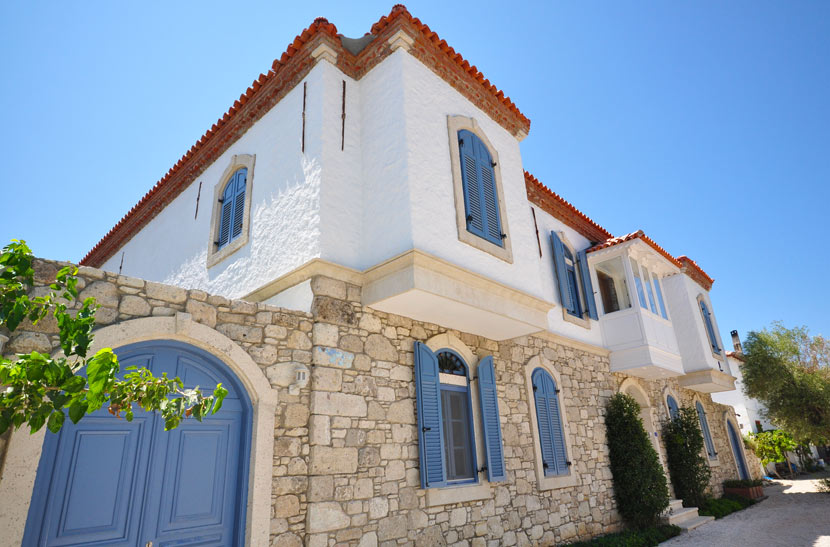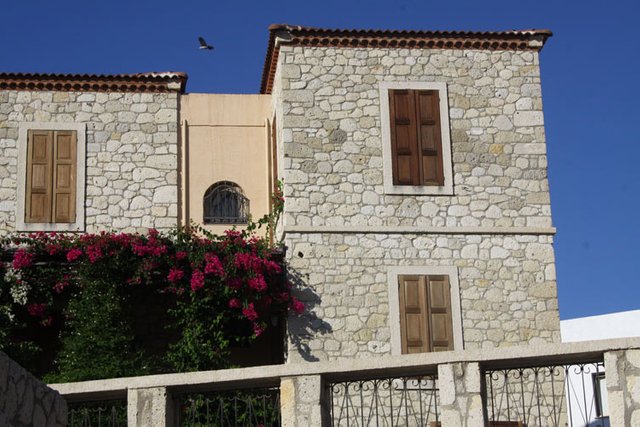The historical texture of Alaçatı: Stone houses
You can not paint like Picasso. He has his own language, the way of expression, his paintings are unique. The architecture is not imitated, as in Alaçatı houses.

The history of the ancient city of Erythrai can be considered with the history of Alacati. It has gained great importance in history because it has its own south facing port. Alaçatı Port is one of the safest ports in the south of Çeşme Peninsula. History BC It goes up to 3000. But the fact that Alaçatı has this present texture comes at the beginning of 1800's. The reason for this is that at the beginning of the 1800s, economic development in Alacati accelerated. How did this development start? At the beginning of the 1800s, the phylloxera disease seen in vineyards in Europe makes all the vineyards inefficient and all the ports that respond to European grape and wine needs are evaluated. One of these ports is Alaçatı Harbor. After 1830, disease-free, quality grapes and wines, which grow on fertile soil of the region, are opened to the world from Alaçatı Port. As a result, the most important factor in the development of the economy of Alacati at that time is wine production, wine production, olive production and olive oil production at the same time. Parallel to these factors, the harbor and thus heavy trade contribute to the economic development of Alaçatı.

The formation of surplus values in Alaçatı enables the buildings to be beautiful and the quality of the furniture to be improved. In 1878-1881, there are two major earthquakes in Alacati. Cesme and Alaçatı houses are damaged by 80-90 percent. Now the construction of the existing houses we see in Alacati, corresponds to the post-earthquake turnover. After the earthquake, houses are restored, new streets are opened, and the city is completely reconstructed.
Exchange changed the way of production
In the past, the dominant population in Alaçatı was the Greeks. The population of the Turks, who were very few until the end of the 1800s, gained weight through exchange after 1922. The production style until 1920s mainly grapes and wine depending on it, wine production by the Turks because of Islam was not adopted. The bonds deteriorated and production workshops were closed. We can clearly observe the economy's reflection on the machinery of production in these days. After the settlement of a small number of Turks in the town after migration, the architecture did not bring about any significant structural changes until the 1970s.

The houses are in front of the city, behind the tarmac
When describing the houses of Alaçatı, first of all we should not mention how the way of life reflects into the building, how it is used and how the building materials are used. The formation of the touch in Alaçatı is formed entirely by transferring the form of production to the city life. In Alaçatı, there are houses on the main streets, behind the houses large gardens and courtyards. Behind them are fields. The front of the houses is the street and the town, the back is the gardens and the fields.